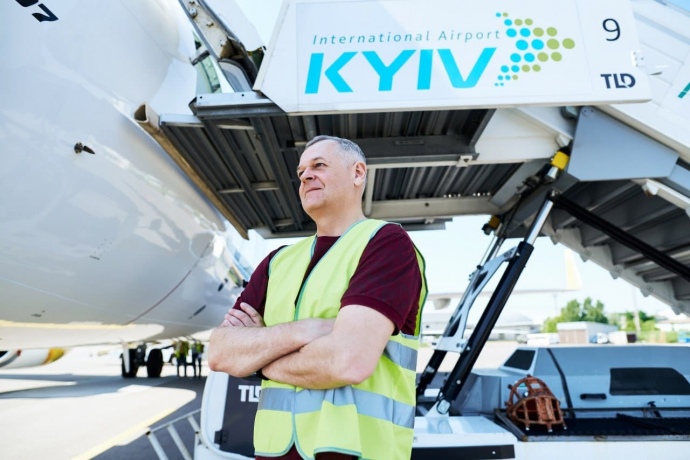The Concession Model of Kyiv Airport as an Accelerator of Ukraine’s Economy
Successful Public–Private Partnership on the Example of “Zhulyany”
Denys Kostrzhevskyi, Chairman of the Board of Directors of Kyiv International Airport, expert in the field of public–private partnership.
The history of the capital’s Kyiv (Zhulyany) Airport is a vivid example of a successful implementation of a public–private partnership in infrastructure. In the early 2000s, this airport was in decline: the old terminal (built back in the mid-20th century) was unsafe, the runway was too short for modern aircraft, the municipal enterprise’s debts reached UAH 22 million, and subsidies from the city budget were turning into a “bottomless pit.” The situation was reversed by the arrival of a strategic investor—Master-Avia—under a concession-type cooperation model that became possible after the adoption of the Public–Private Partnership Law in 2010.
The private investor paid off all the airport’s debts and, in just 10 months, built a new, modern Terminal A with a throughput capacity of 520 passengers per hour, opening it right in time for EURO 2012. The new terminal complex immediately became a calling card of the capital and welcomed over 90,000 championship guests.

After that, Master-Avia LLC continued to invest in the development of Kyiv Airport. Over 13 years, the private operator’s total investments exceeded UAH 4 billion (more than EUR 200 million at the prevailing exchange rates at the time), which made it possible to completely renew the infrastructure and transform “Zhulyany” into a successful enterprise.
As Denys Kostrzhevskyi notes, this also brought significant benefits to the city and the state: around 10,000 new jobs were created, over UAH 500 million in taxes were paid, and the airport itself became one of the largest taxpayers among Kyiv’s municipal enterprises. By 2018–2019, Kyiv Airport had already reached a stable annual passenger flow of 2.6 million, taking second place in the country. The successful concession model made it possible to quickly modernize the facility, attract more than 40 partner airlines, and turn it into a base for the low-cost carrier Wizz Air. This experience proves that a public–private partnership can revive even a neglected enterprise and ensure its sustainable growth.
Post-war Needs: Financing Reconstruction and Assessing Damage
Today, in 2025, Kyiv Airport once again needs significant investment—this time for post-war recovery and modernization. The war caused direct damage to the airport’s infrastructure of at least EUR 20 million, and the total losses, taking into account lost revenues and business devaluation, exceed EUR 500 million. Having practically halted operations for several years, the enterprise lost the financial resources for development, while the state and city budgets, under wartime conditions, are constrained by priority defense expenditures. Under such circumstances, it is only logical to raise the question of seeking private investors for the airport’s rapid reconstruction.
Even before the war, the Zhulyany modernization plan was estimated at many billions of hryvnias, which they hoped to obtain from the Kyiv City Council as the airfield’s owner. However, even then a concession model was being considered—the transfer of the airport to the management of a strategic investor through a competitive process. Today, such a public–private approach appears even more relevant, as the city’s finances have come under significant strain due to the war.
For the airport’s reconstruction and development, funding and expertise are needed—resources possessed by large businesses and international airport operators. For example, in September 2023 the German group Fraport (which manages a number of leading European airports) declared its readiness to assist Kyiv in the post-war reconstruction of Kyiv Airport. This indicates foreign investors’ interest in the post-war recovery of the airfield.

The Private Investor as a Catalyst for Rapid Recovery
A concession model, whereby the state or city transfers an airport into long-term management by a private company, can significantly accelerate the implementation of strategic projects.
First, a private investor is interested in putting the asset into operation as quickly as possible, since they begin to recoup their investment only after air services resume. This motivates the execution of construction and reconstruction works within tight deadlines. As experience shows, a concessionaire can carry out an airport modernization project much faster than bureaucratic structures could.
Türkiye has a rich history of similar PPPs: since 1986, 249 projects have been implemented there, bringing USD 156 billion to the state, with the very first being the concession of the new Antalya Airport. The key advantage of this model is that the state does not spend its own funds, yet receives a modern infrastructure facility and subsequently earns from the concession fee. Another advantage is the strictly limited construction or reconstruction timelines stipulated in the concession terms.
Second, the private partner brings modern technologies and efficient management. In the case of Kyiv, this is particularly important: the airport’s strategic priorities include runway upgrades, improvement of navigational equipment, expansion of terminal capacity, and development of new segments (including cargo operations).
A strategic investor, especially an international company with experience, has the know-how to implement such projects to global standards. Moreover, Open Skies for Ukraine requires rapidly bringing infrastructure up to European norms. A concession will allow the attraction of international capital and expertise to modernize Kyiv Airport to the needs of leading airlines. In turn, this will help make the capital’s airport attractive to new carriers after the war and will support the restoration of air connectivity in Ukraine at a fundamentally higher level.
Transparency and Oversight
Naturally, transferring an airport to private hands must occur under proper oversight to prevent corruption or inefficiency. In the past, concession projects in Ukraine often faced public distrust over fears of backroom deals. However, transparency mechanisms today are sufficiently well-developed. First and foremost, the concessionaire for Kyiv Airport should be selected through an international tender with clear conditions, which eliminates avenues for abuse.
The experience of successful concessions in Ukrainian seaports (Kherson, Olvia) confirms this: the state gained benefits and substantial investments. Therefore, provided there is proper state control, the concession model can indeed be implemented honestly and effectively.
Strategic Effect for the Economy and Post-war Recovery
Introducing a concession model at Kyiv Airport can become a catalyst for the economic revival of the capital and the country. The rapid restoration of air connectivity will have a multiplier effect: tourists and business travelers will return; related infrastructure (hotels, restaurants, transport) will pick up; new jobs will be created. Every million air passengers generates tens of millions of hryvnias for the economy through consumer spending and business activity.
And considering that during the war millions of Ukrainians were forced to go abroad, the return of people to Ukraine after victory will largely depend on the availability of convenient flights home. A modern Kyiv airport, restored under a concession scheme, will be able to ensure such flights and will stimulate the repatriation of professionals and entrepreneurs.
Moreover, the concession of “Zhulyany” can become a successful flagship project that will open the way for public–private partnerships in other infrastructure sectors. If a strategic investor quickly modernizes the capital’s airport and demonstrates growth in passenger traffic and profits, this will signal to other regions that PPP is an effective instrument of recovery.
In the post-war period, Ukraine will face an unprecedented demand for restoration: airports, roads, bridges, railways, industrial facilities. The concession model will make it possible to implement strategic priorities by attracting investment capital where the state lacks resources or speed. Ultimately, the concession model of Kyiv Airport can become the accelerator that helps Ukraine take off to a new level of economic development in the post-war period.
Denys Kostrzhevskyi, Chairman of the Board of Directors of Kyiv International Airport, expert in the field of public–private partnership.
